Entries Tagged as 'History'

Joshua trees shot in pano mode by a phone in a moving car.
I’m making lemonade here. The lemon is erroneously putting an album of photos shot at Joshua Tree National Park into my Flickr site devoted to infrastructure rather than the one for everything else. The lemonade is giving this blog some juice in the form of a useful topic: absence of infrastructure. There is a lot of that in the world, and this park is an okay example.
I say okay because it’s not Antarctica, the middle of the ocean, or the Taklamakan. There is a paved road, on which tantalized visitors can gaze through car windows before they hike off on foot to look at wildlife, climb rocks, and enjoy other adventures. There is also some cell coverage, even though the park says there is none. We could get online most of the way to the Wall Street Stamp Mill ruins. Two days earlier we took a hike to Barker Dam, which also featured a bit of cell coverage.
Just off the trail nearby are the remains of a windpump style windmill, that supplied water for the mill and the ranches nearby. Not sure what anyone ranched there, but the windpump made a degree of civilization possible. And I suppose that’s what infrastructure is: a minimum requirement for the kind of life we call civilized.
Thoughts welcome.
Tags: Building · Discovery · Geography · History · Mining · Photography · Rural · Travel · Water
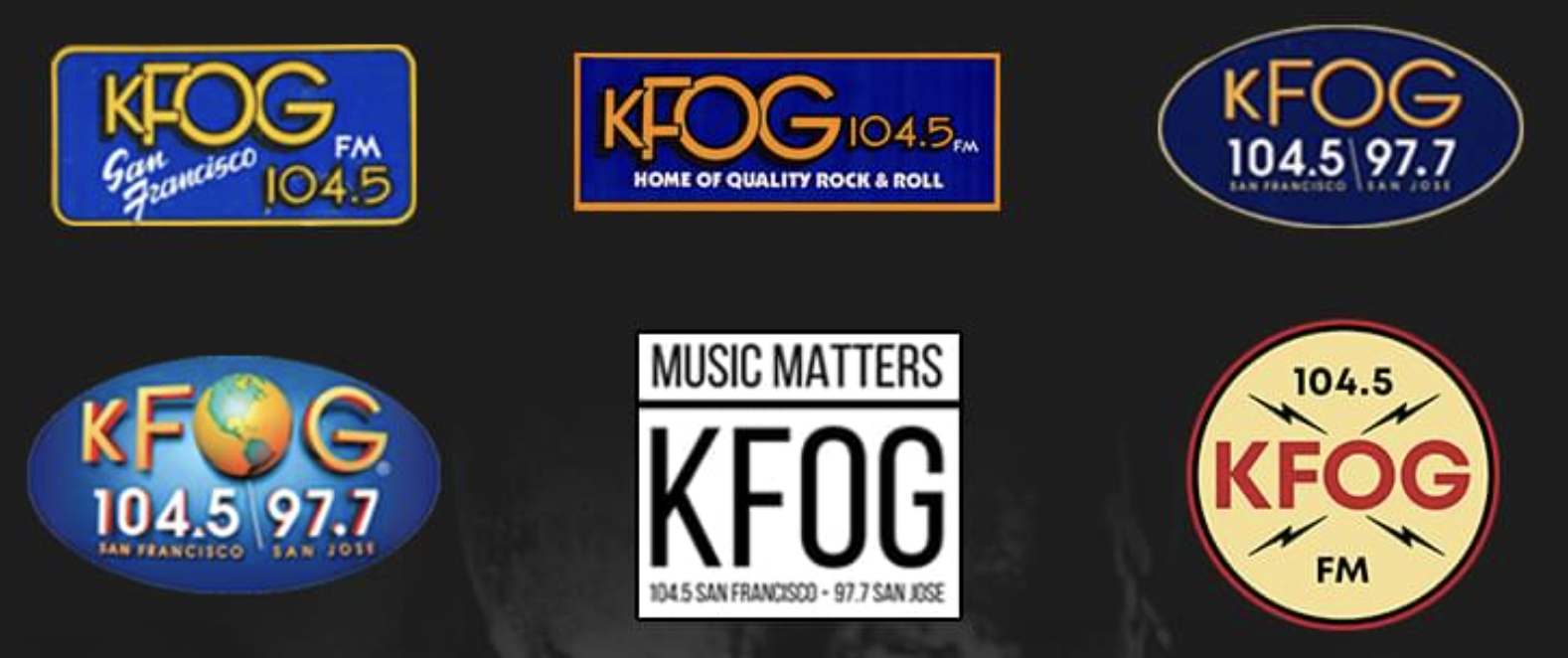
When I moved to Palo Alto from North Carolina in 1985, the preëminent rock station for the Bay Area was KFOG, on 104.5 FM. The morning jock was M. Dung (the on-air handle of Michael Slavko), who did more than anyone else to make me feel comfortable and welcome in a completely new environment. Like the rest of the station, M (what he usually called himself) was “always on, but a little off.”
My fave rock station in North Carolina had been WRDU/106.1, to which many friends who had worked at WQDR/94.7 had just migrated after that much-loved station flipped to country music. (A genre I also like, but we’re talking about friends here.)
From 1982 to 2017, KFOG was a great friend to fans of rock and related genres. You can see how much it was loved just by searching for it. The top results are tribute sites KFOG.com and KFOGisForever. Below those are a list of heartfelt lamentations.
I’ll carry this forward with my answer to a Quora question: Will 104.5 FM in San Francisco ever flip back to any music format?
In American radio, very few station formats are permanent. Two of the most durable are all-news and all-sports. For decades, the biggest all-news and all-sports stations in major markets were only on AM signals. Nearly all of those stations in recent years have added FM signals, displacing whatever was on the FM channel they moved to. All-news WINS/1010 in New York, WBBM/780 in Chicago, and KNX/1070 in Los Angeles moved to 92.3, 105.9, and 97.1 respectively, replacing the music stations on those channels. All-sports WEEI/850 in Boston and WFAN/660 in New York did the same when they moved to 93.7 and 101.9 in those cities. And KNBR/680 did the same in San Francisco when it added the signal at 104.5, long the home of KFOG.
Never mind that KNBR’s day signal covers a third of California and its night signal covers the whole Western U.S., while KFOG’s old signal barely covers the Bay Area. AM is a dead band walking. FM is where the listening is, and the signal at 104.5 is at least competitive. By now there are very few incumbent ratings leaders on AM that have not added an FM signal. KFI/640 in Los Angeles, WLW/700 in Cincinnati, KOA/850 in Denver, and WSCR/670 in Chicago are four that come to mind. There are a handful of others. Even with those, I’m sure it’s a matter of time before their owners find an FM signal to add.
In the longer term, FM is doomed as well. The Internet is slowly eating away at every incumbent communications medium: print, radio, TV, all of it. Your best radio is now the phone in your pocket or purse. All stations of any importance are there as well as on old-fashioned broadcast bands. If you want to hear KFOG again, there are a number of websites streaming the old programs. Nearly every piece of recorded music ever played on KFOG is also on music services from Apple, Amazon, Spotify, and other sources.
Here is another reason why KFOG is unlikely to return to the airwaves: rock music is still with us, but its era is over. We could argue that, but look up Rock Era and see what comes up. KFOG played a lot of genres other than pure rock (one of the things that made the station distinctive), but it was still a rock station.
Music genres today are largely created and maintained online, rather than on the air.
But hey, maybe the old KFOG will return someday.
But, if it does, it will need to pry the callsign from its current holder: KFOG/1250 in Little Rock, Arkansas. Might be a long shot, but money talks. If there is an economic case, it’s one worth making. And, for what it’s worth, the station mostly identifies as “Power 92” (named for its FM signal), and I read in June that the AM side was off the air.
In respect to infrastructure (the theme of this blog), my point is this: As we move into the Digital Age, the Internet and digital tech will finish absorbing and obsolescing every old analog communication system.
Radio’s age lasted roughly from the early twenties of the twentieth century to the early twenties of the twenty-first. Some of what it was will live on through streams and podcasts online. But it’s a matter of time before radios will only play hiss.
Tags: Broadcasting · Future · History · Industry · Over-the-Air (OTA) · Radio
November 6th, 2023 · 1 Comment
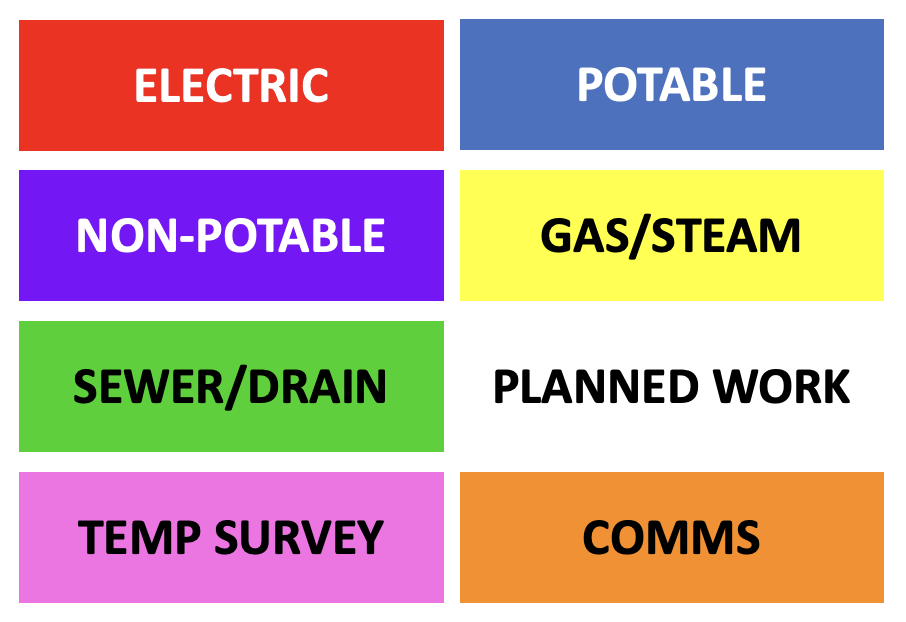
I wrote the following post in 2009. It holds up.
Toward Celebrating 8-11 Day
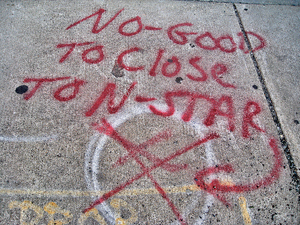
Mark Finnern has a great idea: Wikipedia papers. Specifically,
Every student that takes a class has to create or improve a Wikipedia page to the topic of the class. It shouldn’t be the only deliverable, but an important one.
The Wikimedia organization could help the professors with tools, that highlight the changes that a certain user has done on a page. You only pass, when the professor is satisfied with the scientific validity of the page. One could even mark the pages that went through this vetting process differently.
Instead of creating papers that end up in a drawer, you would create pages that you even feel ownership of and would make sure that they stay current and don’t get vandalized. You could even link to them on you LinkedIn profile.
It would make an enormous difference to the quality of Wikipedia year over year. One can think of wiki-how and other pages that could be improved using the same model.
There are other reasons. For example, Wikipedia has holes. Not all of these line up with classes being taught, but some might. Let’s take one example…

Wikipedia has an entry for 5-1-1, the phone number one calls in some U.S. states for road conditions. It also has an entry for 9-1-1, the number one calls in North America for emergency services. And, while it has an entry for 8-1-1, the “call before you dig” number in the U.S., it’s kinda stale. One paragraph:
All 811 services in the U.S. will end up using 611 by early 2007, as the United States Federal Communications Commission (FCC) in March 2005 made 811 the universal number for the 71 regional services that coordinate location services for underground public utilities in the U.S.[1][dated info] Currently, each of these “call before you dig” services, has its own 800 number, and the FCC and others want to make it as easy as possible for everyone planning an excavation to call first. This safety measure not only prevents damage that interrupts telecommunications, but also the cutting of electricity, water mains, and natural gas pipes. Establishment of an abbreviated dialing number for this purpose was required by the Pipeline Safety Improvement Act of 2002.
That last link takes you to one of those “Wikipedia does not have an article with this exact name” places. The “call before you dig” link redirects to Utility location. There you’ll find this paragraph:
One-call, Miss Utility, or Underground Service Alert are services that allow construction workers to contact utility companies, who will then denote where underground utilities are located via color-coding those locations. As required by law and assigned by the FCC, the 8-1-1 telephone number will soon be used for this purpose across the United States.
Well, it’s already being used. And it’s way freaking complicated, because there’s this very uneven overlap of entities — federal government, state goverenments, regional associations, and commercial entities, to name a few — that all have something to say.
For example, the U.S. Department of Transportation Pipeline and Hazardous Materials Safety Administration, or PHMSA. Right on their front page, they tell you April is Safe Digging Month. Good to know. April of what year? Next to a blurred emblem with an 811 over a shovel (a poor version the above, which comes from the Utility Notification Center of Colorado) and a horribly blurred graphic proclaiming WE SUPPORT SAFE DIGGING MONTH, a Call Before You Dig link leads to a page that explains,
Guidance for implementing safe and effective damage prevention for underground utilities was established by the Common Ground Alliance (CGA), a national organization representing all underground utility stakeholders. Calling before you dig is the first rule to remember when conducting underground related activities, no matter what the job is. The law requires you to phone the “One-Call” center at 8-1-1 at least two days prior to conducting any form of digging activity.
No link to the Common Ground Alliance. That org (a domain squatter has its .org URL, so it’s a .com) explains that it’s “a member-driven association dedicated to ensuring public safety, environmental protection, and the integrity of services by promoting effective damage prevention practices.” Its news page mentions that, among other things, August 11 is “8-11 Day”. It has a press release template in Word format. It also has news that “MGH Hired as CGA 811 Awareness Contractor” in .pdf. Within that one finds MGH’s website URL, where one finds that the agency is @mghus, which may be the hippest thing in this whole mess.
Digging further, one finds that there is a call811.com, which appears to be another face of the Common Ground Alliance. (If you’re interested, here are its “sponsors and ambassadors”.)
Also involved is the American Public Works Association. Apparently, the APWA is the outfit behind what LAonecall (one of the zillion of these with similar names) calls “the ULCC Uniform Color Code using the ANSI standard Z53.1 Safety Colors”. APWA must have published it at one point, but you won’t find it on its website. Hey, Google doesn’t. Though it does find lots of other sites that have it. Most are local or regional governmental entities. Or utilities like, say, Panhandle Energy. Here’s the graphic:

Here in New England (all of it other than Connecticut, anyway), the public face of this is Dig Safe System, Inc., which appears to be a nonprofit association, but there’s nothing on the site that says wtf it is — though it is informative in other respects. It does say, on its index page,
What is Dig Safe ®?
State laws require anyone who digs to notify utility companies before starting, and for good reason. Digging can be dangerous and costly without knowing where underground facilities are located.
Dig Safe ystem, Inc. is a communication network, assisting excavators, contractors and property owners in complying with state law by notifying the appropriate utilities before digging. Dig Safe®, a free service, notifies member companies of proposed excavation projects. In turn, these member utilities respond to the work area and identify the location of underground facilities. Callers are given a permit number as confirmation.
Member utilities, or contracted private locators, use paint, stakes or flags to identify the location of buried facilities. Color coding is used to identify the type of underground facilities… (and the same color coding as above)
I found out all of this — and much more — while I was researching for my column in the November issue of Linux Journal, which has Infrastructure the issue’s theme. I’m leveraging my leftovers here, closing one tab after another in my browser.
I’m also interested in approximately everything, one of which is the official-looking public graffiti on the ground all over the place. These are known locally as “dig safe markings”. At least that piece of the scattered one-call/call-before-you-dig/8-1-1 branding effort has taken root, at least here.
Anyway, I’d love to see a Wikipedia entry or two that pulls all this together. Maybe I should write it, but I’m busy. Hey, I’ve done this much already. Some actual experts ought to pick up the ball and post with it.
Which brings us back to Mark’s suggestion in the first place. Have a class do it.
Hey, @mghus, since you’re in Baltimore, how about suggesting a Wikipedia page project to The Civil & Environmental Engineering Department at UMBC?
Maybe for 8-11 Day?
[Update on 6 November 2023] Still no 8-11 Day, but the Wikipedia’s Utility Location article is pretty good now, covering various approaches around the world.
Tags: History · Standards · Underground

Mountains are temporary. All are in the queue for demolition, eventually. So is the whole planet. I explain that in The Universe is a Startup.
Blogs are more like beach sand. Or a whiteboard. So is the whole Web. In the old days we thought it was a library. Now we know it’s not. (Though the Internet Archive truly is, and that’s why we love it.)
On Saturday this blog and the one behind that first link—my personal one, which I’ve had at blogs.harvard.edu since 2007, will be gone from that domain. So will ProjectVRM, which I started at the Berkman Klein Center in 2006, and remains very active.
The challenge now is to migrate them to new domains.
Those qualify as infrastructure too. While they last.
Tags: Geography · History · Industry
September 24th, 2022 · No Comments

MEGO in journalism stands for My Eyes (or Ears) Glaze Over. According to William Safire , a MEGO os “a subject of great importance which resists reader interest.”
Infrastructure is a one-word MEGO.
So I haven’t written much about infrastructure, including here: on a blog created by Christain Sandvig when we were both fellows at the Berkman Klein Center. It was meant as a place where learned folk who care about infrastructure could hold forth. A variety of those was recruited to participate, and approximately none did, including me. I’ve kept it alive in recent years by posting here occasionally, mostly with stuff that I think fits better here than anywhere else I tend to write.
In the meantime, I have kept an active site on the topic going: a Flickr account with the name Infrastructure. My chief interest there is in showing the plasticity of infrastructure over time: how it changes or gets replaced. I am especially interested in forms of infrastructure that are out of sight, mind, or booth, but on which we depend completely. These include water, gas, electricity, waste treatment… all the usual.
Plus broadcasting. Because that’s the form of infrastructure I know best, care about most, and see disappearing. Nobody else seems to be on this beat, so I’m stepping up.
“Compulsions are easy to come by and hard to explain,” John McPhee explains in a New Yorker essay that visits his compulsion to collect stray golf balls. I am likewise compelled to take pictures of transmitter sites. I came by my interest in transmitters when I was a kid growing up in New Jersey, observing the Manhattan Skyline from across swamps populated by dozens of transmitting towers for New York’s AM radio stations. I loved radio and was so curious about the sources of signals that I would ride my bike down Route 17 (dangerous and dumb, but I survived) to WABC in Lodi, WINS in Lyndhurst, and WADO, WBNX, and WHN on Patterson Plank Road in Rutherford and Carlstadt. There I would gawk at the towers and sometimes knock on doors of the buildings feeding signals to the towers, so I could talk shop with the engineers who answered. The compulsion stayed with me. So, after I could drive, I visited countless other facilities, including mountaintop FM and TV stations.
But I didn’t begin shooting lots of photos of broadcast transmitters until digital photography became easy, along with publishing details about them. (One of the most active groups on Facebook is titled, no kidding, “I take pictures of transmitter sites.” It has over fifteen thousand members, most of which, I gather, are active or retired engineers like the ones I would visit as a kid.)
In the last few years, I’ve also come to realize that I’m documenting a medium in decline. Radio is being eaten on the music side by streaming (Apple, Amazon, Spotify, Pandora) and on the talk side by podcasting. Broadcast TV moved almost entirely from antennas to cable decades ago, and now cable itself is being replaced by subscription (aka “prestige”) video services. TV stations maintain transmitters mostly to satisfy “must carry” rules for cable. (Your station can’t be on cable if it’s not on the air.) So now my transmitter site photography has a documentary purpose: keeping up with what’s going down.
The example at the top of this post tells the story of one tower transmitting three of Santa Barbara’s AM stations: what broadcast engineers call a triplex on a monopole. Here’s what the tower looked like for most of its life, when it was 198 feet tall and proclaiming itself a landmark with bright red and white paint. And here’s what it looks like since December of last year, at just 128 feet tall, painted dark green to camouflage it among surrounding palm and eucalyptus trees. The tower now makes up for its lack of height with a flat 24-foot-wide X mounted on top like the candy on a lollypop. The tower was shortened because it was slightly bent. Twenty years ago, the tower would have been replaced or straightened.
Since the tower is now less efficient, the stations have adjusted their powers, mostly upward. Listeners, I am sure, can tell no difference. Nor did they notice when WBBM/780, Chicago’s alpha news station, dropped from its legacy status, running 50,000 watts full time, to 35,000 watts in the daytime and 44,000 watts at night. they did that so the station’s owner could sell off the land under the station’s transmitter sits. WBBM is now diplexed onto the tower of sister station WSCR/670.
The Santa Barbara stations are lucky that their tower stands a city equipment yard, consuming only a few square feet of space on the ground that’s not for sale. Countless other AM stations across the country have been going dark or operating with cheaper facilities. They do this because AM listening is declining while the value of land under many transmitter sites exceeds the worth of the signals. In the Santa Barbara case, the tower stands in the city equipment yard, taking up almost no room on the ground, and the shorter tower works almost as well as it did at full height. And, because it’s an example of AM’s growing unimportance, I keep shooting pictures of stations like these.
Among the reduced or deceased signals:
- WMEX/1510’s 50,000-watt facility
- WFNI’s 50,000-watt six-tower site in Indianapolis. (That link is to a 2019 Google Streetview of the site. Note the For Sale sign. It’s sold now, the station is off the air, and the land covered with buildings. It was, for most of its life, and at the time of its demise, the biggest AM station in Indiana. When I lived in North Carolina, it was one of the biggest signals one could get at night.)
- KABC/790’s and KHJ/930”s legacy transmitting sites in Los Angeles
- KOKC/1520’s original full-size towers (lost in a tornado and replaced with cheaper ones half as high and much less efficient)
- WDNC/620 in Durham and WKIX/850 in Raleigh, North Carolina, with land sold from under their old towers
Those are harbingers toward a time when AM is gone completely, as it already is in much of Europe. FM and TV are not far behind. But streams will remain, as the most popular radio already is the smartphone.
And I want to document as much of the change as I can.
By the way, I am also firing up this blog because it is also starting to show up in some RSS feeds. Greetings, feedsters!
Important: RSS is a hugely important source of Internet infrastructure. Dig:

Nothing with that many results can’t matter.
Tags: Future · History · Industry · Media · Radio · Television

I’m reviving this blog to see what happens.
If readers are interested I’ll see if any of the other writers (including the readers who write in) are interested in re-joining. Or, if we want to move it elsewhere. Or something. Not sure. Ideas welcome. If you have some, write me at my first name at my last name dot come. Thanks!
Tags: History · Industry

To answer the question Where are SiriusXM radio stations broadcasted from?, I replied,
If you’re wondering where they transmit from, it’s a mix.
SiriusXM transmits primarily from a number of satellites placed in geostationary orbit, 35,786 kilometres or 22,236 miles above the equator. From Earth they appear to be stationary. Two of the XM satellites, for example, are at 82° and 115° West. That’s roughly aligned with Cincinnati and Las Vegas, though the satellites are actually directly above points along the equator in the Pacific Ocean. To appear stationary in the sky, they must travel in orbit around the Earth at speeds that look like this:
- 3.07 kilometres or 1.91 miles per second
- 110,52 kilometres or 6,876 miles per hour
- 265,248 kilometres or 165,025 miles per day
Earlier Sirius satellites flew long elliptical geosynchronous orbits on the “tundra“ model, taking turns diving low across North America and out into space again.
Satellites are also supplemented by ground repeaters. If you are in or near a site with repeaters, your Sirius or XM radio may be tuned to either or both a transmitter in space or one on the ground nearby. See DogstarRadio.com’s Satellite and Repeater Map to see if there is one near you.
In addition, SiriusXM also streams over the Internet. You can subscribe to radio, streaming or both.
As for studios, those are in central corporate locations; but these days, thanks to COVID-19, many shows are produced at hosts’ homes. Such is the case, for example, with SiriusXM’s popular Howard Stern show.
So, to sum up, you might say SiriusXM’s channels and shows are broadcast from everywhere.
I should add that I’ve been a SiriusXM subscriber almost from the start (with Sirius), and have owned two Sirius radios. The last one I used only once, in August of 2017, when my son and I drove a rental minivan from Santa Barbara to Love Ranch in central Wyoming to watch the solar eclipse. After that it went into a box. I still listen a lot to SiriusXM, almost entirely on the phone app. The rest of my listening is over the Web, logged in through a browser.
Item: a few days ago I discovered that a large bill from SiriusXM was due to a subscription for both the radio and the Internet stream. So I called in and canceled the radio. The subscription got a lot cheaper.
I bring this up because I think SiriusXM is an interesting one-company example of a transition going on within the infrastructure of what we used to call radio and would instead call streaming if we started from scratch today.
In The Intention Economy (Harvard Business Review Press, 2012), I saw this future for what we wouldn’t call television if we were starting from scratch today (or even when this was published, eight years ago):
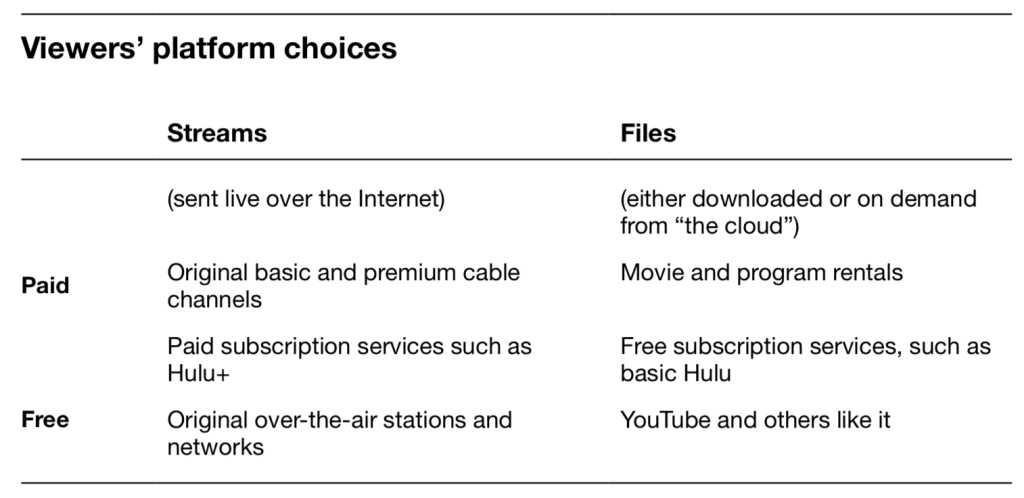
Today we’d put Netflix, Amazon Prime, YouTube TV and Apple TV in the upper left (along with legacy premium cable staples, such as HBO and Showtime). We’d put PBS stations there too, since those became subscription services after the digital transition in 2008 and subsequent spectrum sales, which reduced over-the-air TV to a way for stations to maintain their must-carry status on cable systems. (Multiple “repacks” of TV stations on new non-auctioned spectra have required frequent “re-scans” of signals on TVs of people who have antennas and still want to watch TV the old-fashioned way.)
Over-the-air radio is slower to die, but the sad fact is that it has been terminal for years. Here’s the diagnosis I published in 2016. I’ve also been keeping a photographic chronicle of radio in hospice, over on my Flickr account for Infrastructure. A touching example of one station’s demise is Abandoned America’s post on the forgotten but (then) still extant studios of WFBR (1924-1990) in Baltimore.
Like so much else, over-the-air radio is being subsumed into Internet streams and podcasts (in the two Free quadrants above).
Want to have some fun? Go to RadioGarden and look around the globe at streams from everywhere. My own current fave is little CJUC in Whitehorse, Yukon. (I list many others from earlier explorations here.) All of those are what we call “on” the Internet. But where is that?
We can pinpoint sources, as RadioGarden does, on a globe, but the Internet defies prepositions, because there is no “there” there. There is only here, where we are now, in this non-place, a functionally vast but geographically absent non-place: a giant zero with no distance and no gravity because its nature is to defy both. I’m in Santa Barbara right now, but could be anywhere. So could you.
On the Internet, over-the-air TV and radio are anachronisms, though charming ones. Like right now, as I’m listening to Capricorn FM from Polokwane, South Africa. (“Crazy up-tempo hip-hop” is the fare.) But I’m not listening on a radio, which would need to tune in 89.9fm, within range of the transmitter there. I’m here, on (or in, or through, or pick-your-preposition) the Internet.
Or consider the case of KSKO/89.5 in McGrath, Alaska, population 319. Here’s how it looks on Radio.Garden:
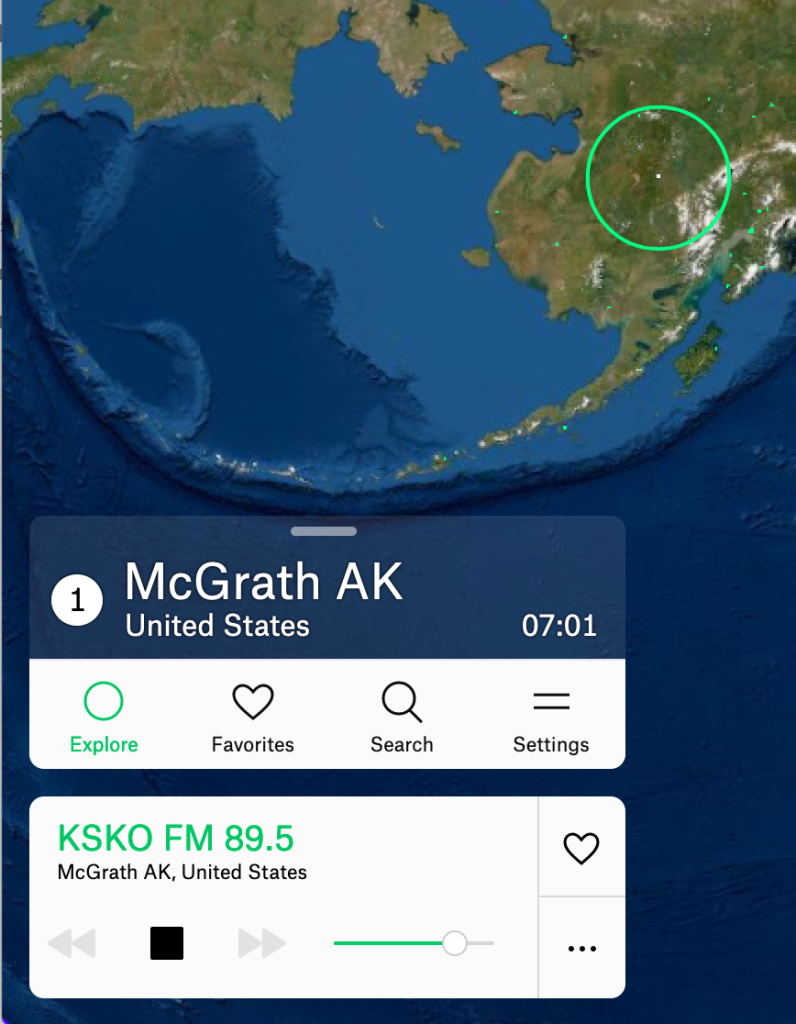
Geographically, McGrath elongates the meaning of “isolated.” No roads lead there from elsewhere. Visitors come and go to other parts of the world by plane, dogsled, or boat during months when the Kuskokwim River isn’t frozen. (The name is derived from the Yup’ik words for “big slow moving thing.”) In Coming Into the Country, the best book ever written about Alaska, John McPhee says “If anyone could figure out how to steal Italy, Alaska would be the place to hid it.” Power-wise, KSKO is just 90 watts, with an antenna on a pole beside the station. Since the population of McGrath is just 319, and nearly all are within shouting distance of each other, it doesn’t need to be bigger.
What matters, however, is that I’m listening to KSKO right now in Santa Barbara. (Before that I was digging the equally community-involved KIYU in Galena, 130 miles away, where the station a few minutes ago reported a temperature of -30°f. With “freezing icy fog” coming, a high of -15°f and a low tonight of -40°f. Fun.)
A few years ago my teenage son asked me what the point of “range” and “coverage” was for radio stations. Why, he wondered, was it a feature rather than a bug that radio stations’ signals faded away as you drove out of town? His frame of reference, of course, was the Internet. Not the terrestrial world where distance and the inverse square law apply.
Of course, we’ll always live in the terrestrial world. The Internet may go away, or get fractured into regions so telecom companies can bill for crossing borders and not just for use, or so governments can limit what can happen in their regions (as we already have in some countries, most notably China). But the Internet is also an infrastructural genie that is not going back in the bottle. And it is granting many wishes, all in a new here.
Tags: Geography · History · Media · Radio · Television
For anybody interested in the history of infrastructure, and lessons to be learned from many points in the history of the Industrial Age, Andrew Odlyzko, of the University of Minnesota, is required reading.
Here is a reading list.
Note the pieces on railway mania. Highly relevant stuff.
I’m writing this right now while leveraging one of the older forms of Industrial Age transport: canals. We are currently on one in Lorraine, France. Built in the early 1800s, it remains in use occasionally for barges, but is better known now for leisure boating. That’s what we’re doing here. It’s a small but thriving industry.
Tags: History · Industry













